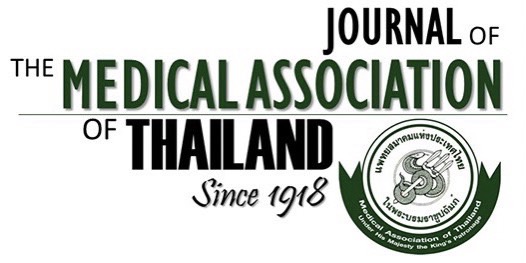Impact of Endobroncial Ultrasound Guided Transbrocnhial Needle Aspiration on Clinical Practice Guideline
Jamsak Tscheikuna MD*, Supparerk Disayabutr MD*,
Affiliation : * Division of Respiratory Disease and Tuberculosis, Department of Medicine, Siriraj Hospital, Mahidol University, Bangkok, Thailand
Objective : Endobronchial ultrasound guided transbronchial needle aspiration (EBUS TBNA) is performed by using special
bronchoscope which has an ultrasound probe at its tip that could demonstrate lymph node outside the airway and allow for
real time observation of transbronchial needle aspiration. The sensitivity and specificity of EBUS TBNA are high in many
studies. However, because of the high expense and special training required, the impact of this method on clinical practice
guidelines (CPG) needs to be further evaluated.
Material and Method: The patients were classified to three groups. Group One included proven lung cancer patients who do
not have distant metastasis and no mediastinal lymphadenopathy as demonstrated by computer tomography. Group Two was
the same as group One except there was evidence of mediastinal lymphadenopathy. The Third Group included patients who
only had mediastinal lymphadenopathy without lung lesion. All lymph node stations were examined by EBUS and their sizes
were recorded. Selected puncture of a lymph node was done and tissue was sent for cytological examination. There was no
rapid on site cytologic examination. The impact on CPG was calculated from the number of patients who be prevented from
mediastinoacopy.
Results : There were 158 patients in the present study. The number of patients in group 1, 2 and 3 were 64, 57 and 37
respectively. The mean size of the mediastinal lymph node which detected by EBUS was 1.34 cm (range 0.36-3.81 cm). TBNAs
were done in 164 nodes out of 353 nodes found by EBUS. The most common enlarged mediastinal node was at station 7 and
those at station 4R and 3 were less common in sequence. In all three groups, malignant cells were established in 71 patients
(44.9%). In group 1 malignancy was found in 21 (32.8%), in 39 patients (68.4%) in group 2 and in 11 patients (29.7%) in
group 3.
Discussion: If the CPG recommend mediastinoscopy for all lung cancer patients, EBUS TBNA can save 49.5% of patients
from the procedure. But if only enlarged mediastinal node would be considered for mediastinoscopy ,EBUS TBNA can save
up to 59.5% patients from mediastinal surgery.
Conclusion : EBUS TBNA has impact on CPG for assessment of mediastinal node in lung cancer and mediastinal
lymphadenopathy patients.
Keywords : Endobronchial ultrasound guided transbronchial needle aspiration (EBUS TBNA), Mediastinal lymphadenopathy, Clinical practice guideline



